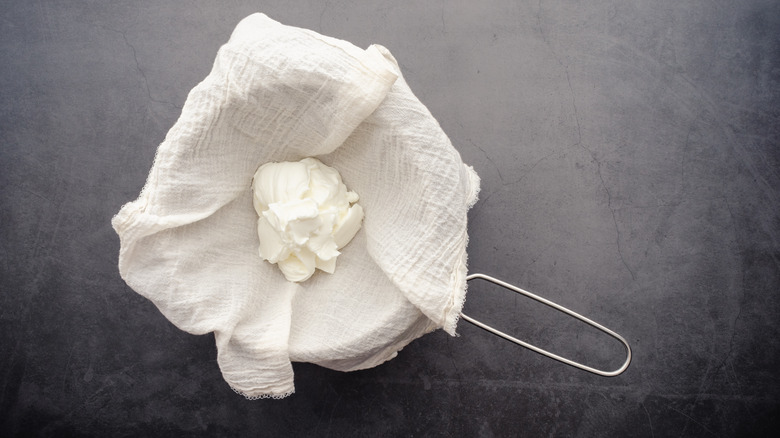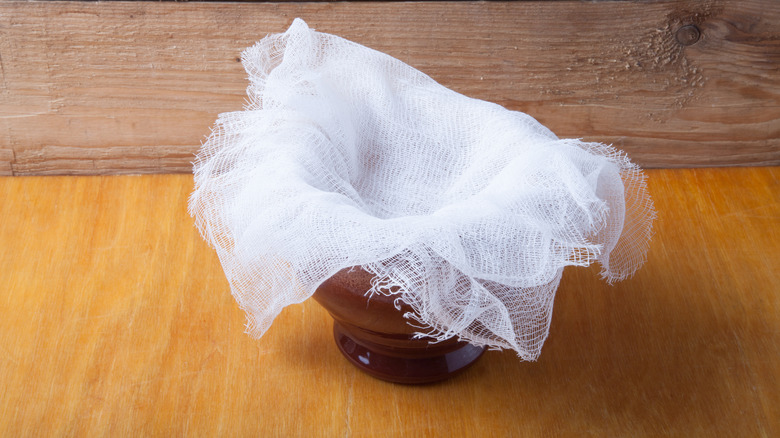Is It Okay To Reuse Cheesecloth?
Originally designed for separating cheese curds from liquid whey during the process of making cheese, cheesecloth is a thin gauze-like piece of fabric with a loose and open weave that has numerous uses around the kitchen. For one thing, it's great for straining liquids when you need to remove even the tiniest of particles from the liquid. Cheesecloth is also handy for bundling herbs and spices in a bouquet garni when you want to add an extra infusion of flavor to broths and soups (and for straining those broths once done).
Cheesecloth can also be used to "feed" and keep fruitcakes moist and to dry age steaks in the refrigerator (via MasterClass). You can use cheesecloth to decorate pastries or to make cold-brew coffee, according to Cooking Light. Martha Stewart even uses a butter- and wine-soaked cheesecloth to make a juicy roast turkey for Thanksgiving dinner. You can also use cheesecloth for cleaning purposes. Given its many uses, you'll want to make sure you have plenty of the versatile fabric around. However, what happens if you've used all your cheesecloth and you don't have any of the alternatives for cheesecloth laying around? Is it possible to reuse cheesecloth?
You may be able to reuse your cheesecloth
Whether you can reuse cheesecloth depends on how it's made. Some cheesecloths are designed to be single use only. Look on the label or packaging, and if that's the case, you shouldn't reuse that cheesecloth since single-use cheesecloths often break down after just one use, warns Substitute Cooking.
Before reusing any cheesecloth, you want to make sure that you properly clean it first, for food safety reasons — as the Webstaurant Store explains, "using it to strain, cover, or wrap uncooked or perishable foods can cause your cheesecloth to accumulate bacteria, as well as stains." MasterClass recommends cleaning cheesecloths right after using it, as it's easier to remove any stains that way before they've had a chance to set in. You should rinse cheesecloth with warm water, and scrub it to remove any debris that might be stuck to it. Then soak the cheesecloth for 30 minutes in a baking soda mixture, before boiling it for an additional five minutes to sterilize the cloth. Finally, make sure to wring out any excess water before hanging the cheesecloth to dry in a well-ventilated area to prevent any mold from growing and ruining your cheesecloth. With proper care, you should be able to reuse your cheesecloth numerous times.

